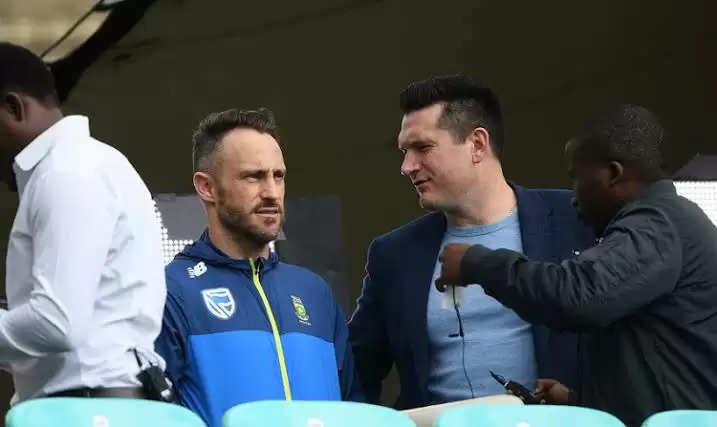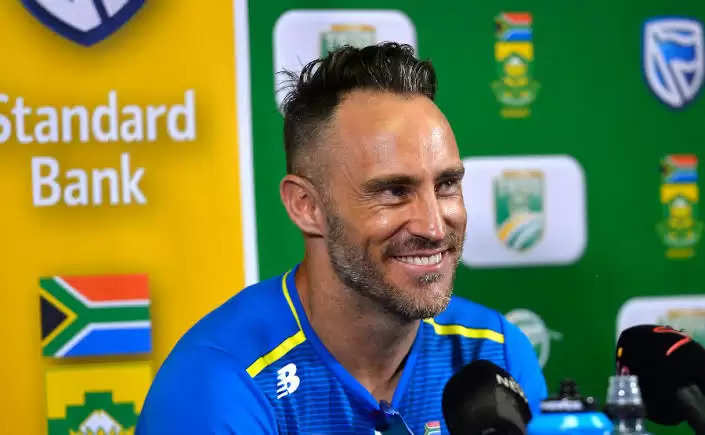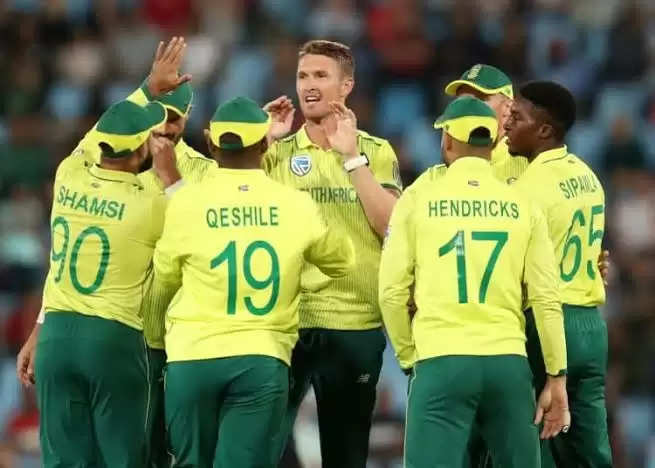Bold tactical calls to start New Year, but do South Africa have a transformation plan?

A day before the start of the New Year’s Test match at Newlands, South Africa skipper Faf du Plessis announced in the presser that South Africa would continue to field Rassie van der Dussen despite Temba Bavuma being fit. He also added that Pieter Malan would open in place of the injured Aiden Markram with new call-up, Keegan Petersen waiting on the bench.
Bavuma has a Test average of 31.24 after five years of Test cricket while van der Dussen is in the form of his life across formats, last week completing the ultra rare treble of a half-century on ODI, T20I and Test debuts. No other captain in world cricket would be asked to explain Bavuma being benched. But du Plessis helms the South African cricket team, where, arguably, performance isn’t the sole criteria to win selection.

South Africa are aggressively implementing transformation to involve the large chunk of their population (more than 90%) in sport and the Proteas are required to field 55% players of colour (or six players – four coloured and two blacks – per game on an average) over a year across formats.

Temba Bavuma averages under 32 after five years of Test cricket.
At Centurion, they fell short of that target when they fielded just four coloured players – Zubayr Hamza, Vernon Philander and Keshav Maharaj being the coloured players and Kagiso Rabada being the sole black representative. As such when Petersen, a player of colour (with a record good enough to warrant a place, mind you), was added as cover for Markram with an opener in Pieter Malan already available in the squad, it raised speculation.
Head Mark Boucher quashed those doubts earlier in the week by declaring that Malan would indeed debut at Newlands.
“Pieter Malan was selected in the squad. For us to go messing around with the opening position wouldn’t be clever,” Boucher said. “Pieter Malan has done a lot of good work over a long period of time. It’s his home ground. At the moment, we are swinging towards having a straight swap for the opening batsman.”
For a team that created a huge political ruckus to play Philander over Kyle Abbott in that ill-fated World Cup semi-final of 2015, this was a huge change. Now, with Bavuma fit, South Africa had the option of either replacing Dwaine Pretorius – a white player who was persuaded to shed a potential Kolpak by the new Director of cricket at Cricket South Africa, Graeme Smith – or Rassie van der Dussen. But it wouldn’t have been a fair call and du Plessis confirmed the same a day before the Newlands Test, not batting an eyelid before saying the dreaded ‘C’ word (no, not choke, but colour).

Du Plessis deemed colour irrelevant on the eve of the Newlands Test
“We don’t see colour and I think it’s important that people understand that. Opportunity is very important for any colour,” Du Plessis said. “It’s important for the good of the game that we start producing good cricketers. For me, the colour is irrelevant.
“There will be things in place and people in place to make sure that we keep producing players of all different colours, but for right now what we need to do is win Test matches and games of cricket. We need to raise the level of performance for all of us and if we do that, then naturally the other things will fall into place,” du Plessis added.
In 2016, South Africa’s sports minister, Fikile Mbalula banned the country’s cricket association from bidding or hosting major international events for failure to create enough opportunities for black players. But in 2019, there seems to be a marked change in thinking. Transformation policies were relaxed for the World Cup with CSA chief executive, Thabang Moroe declaring that the selectors and coach could pick any 15 they seemed good eboy to represent the country.
Late last year, the Cape Cobras franchise fielded two black players instead of the required three in a domestic series. The Cobras wrote an explanation to CSA before the match, where they stated that they prioritised giving players who had returned from the India series some match time. They added that replacing in-form players from the previous rounds wasn’t a feasible option and if sources are to be believed, CSA did not penalize the team.
While the domestic transformation rules are checked on a match-by-match basis, the national team is analysed over a year across formats on an average. There was a proposal to implement the same for domestic teams too after the Cobras incident, but it isn’t approved yet. What’s clear here is that transformation as such is going nowhere. It must also be emphasized that transformation isn’t a bad ploy given that more than 90% of the population gets exposure, but the manner in which it was implemented was always an issue.

Vernon Philander’s retirement further compounds South Africa’s issues to meet transformation targets
Now, the Proteas openly deviating from the said policy first thing after New Year is likely to have wider implications. The thinking is probably that they can make up the average over the course of the year, but with Philander (coloured) retiring, Lungi Ngidi (a black African player) frequently injured and Bavuma losing his place, South Africa don’t have enough players of colour coming through in Tests.
Could they make up in ODIs and T20Is instead? They could, but similar problems exist there too.
In their World Cup 2019 team, South Africa had five coloured players and three blacks. Of those, Tahir has retired, Ngidi has injury concerns and Beuran Hendricks (a replacement for Dale Steyn at the event) isn’t a regular.
It is in T20Is that South Africa have made up their numbers. Last year, South Africa fielded 20 players of colour, 7 of them black, across formats. In T20Is, 13 of them played (6 of them black Africans). The corresponding number in ODIs is 8 (3 blacks) and 9 in Tests.
It’s fairly evident that South Africa have fielded more black and coloured players to make up the numbers in T20Is. In fact, in one series against Sri Lanka at home, they named six players of colour (including 3 blacks) in a 13-man team for the final two games.
Now, the question is two-fold:
- Have South Africa been making up the transformation targets by forcefully fielding players of colour in the shortest format?
- If so, can the same be done in 2020, the year of the T20 World Cup, to meet targets?
With the T20 World Cup coming up, the shortest format games automatically gain more importance. Compensating numbers in T20Is, if that’s how it’s being done, may not be a good option for their World Cup preparations.

T20I matches have been used to accelerate towards that required 55%
The bigger question, though, is if transformation is actually being implemented the right way if compensating numbers in inconsequential matches is what’s happening. A deep dig into South Africa’s recent T20Is show up an interesting pattern.
Since 2018, South Africa have 12 debutants in T20Is with six of them being coloured players (four black Africans). Except Junio Dala, none of the other players of colour who debuted since 2018 have played more than 5 T20Is. Even Dala has played less than 10 games.
Opportunities have been given and taken back as quickly and a black player or another coloured player has replaced a similar incumbent player too frequently. A rather inconspicuous event from early 2019 becomes relevant here. 27-year old black African, Jerry Nqolo, a promising domestic batsman at the Warriors, retired prematurely after his contract ended.
In a bare-it-all interview with The Citizen, Nqolo pointed out that black Africans weren’t given adequate chances before being dumped.
“White batsmen get played despite the number of failures they accumulate. They get all the backing until everything starts clicking for them. For us black batsmen, you play once or twice and you’ll be dropped by the third time if you haven’t performed. You are expected to perform miracles once you get picked, which is not fair. You get rotated with another black player, who is likely to get two or three chances before he is out the door. You can never settle as a black batsman,” Nqolo said then.
Even if Nqolo’s stats don’t quite add up with his statements, the last few sentences does strike a chord when you consider that none of Proteas’ coloured debutants since 2018 in T20Is have had more than ten chances in two years.

Boucher and Smith have instilled faith in the players after the tiffs with the board
While the new regime under Graeme Smith – Mark Boucher has come in for a lot of appreciation, one grey area could be transformation and how they plan to adhere to the targets. If the transformation targets are to be met – something they failed to do in 2019 – South Africa need to find ways of doing it. If that’s not the case – a subtle undertone that unmistakably became clear in du Plessis’ presser before the Newlands Test – there’s bound to be backlash.
The BACC (Black African Cricket Clubs) have already argued that Smith does not understand the “dynamics” of cricket in rural areas. Chairperson of the club, Ntsongo Sibiya was pretty vocal in stating that Smith’s upbringing prevents him from understanding the political half of cricket in the country.
“If you tell me I must trust in the next generation of black African players without me and him [Smith] sitting and talking about how do we – together – make sure that black African players can come through, we have a problem,” Sibiya said.
The original intention and idea of transformation is to involve the large chunk of the population in the sport so that it would eventually pave way for an uncluttered pipeline of talent years down the lane. But the manner in which it was enforced, and now implemented, raises questions.
The decision to field Van der Dussen over Bavuma and Malan ahead of Petersen makes perfect sense from a cricketing perspective. But given the landscape of South African cricket and the existing transformation laws, CSA might just need a proper plan in place to align itself to the requirements better.

